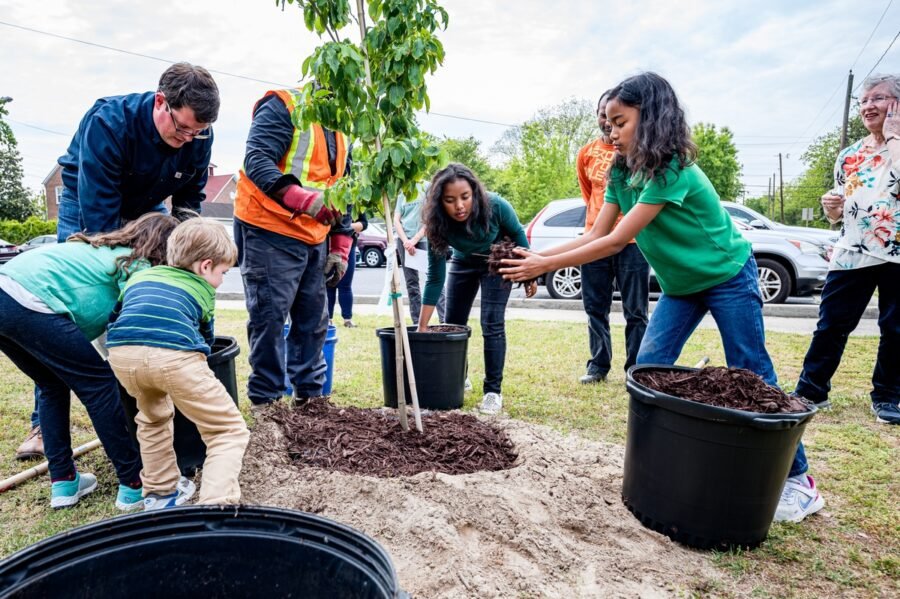In a groundbreaking study, researchers have found that living in tree-filled neighborhoods may significantly reduce the risk of heart disease. This new research highlights the potential health benefits of increased greenery in urban areas, suggesting that tree-filled neighborhoods can play a crucial role in improving heart health.
The Green Heart Louisville Project’s HEAL Study: Planting Trees in Tree-Filled Neighborhoods to Combat Heart Disease
The Green Heart Louisville Project’s HEAL Study, conducted by the University of Louisville, explored the impact of creating tree-filled neighborhoods on heart health. In South Louisville, Kentucky, over 8,000 trees were planted in various low- to middle-income neighborhoods as part of this innovative research. The study aimed to measure how these changes affected residents’ heart disease risk in these newly greened areas.
Why Tree-Filled Neighborhoods Might Lower Heart Disease Risk
Tree-filled neighborhoods contribute to improved air quality, reduce urban heat, and encourage physical activity-factors that can collectively enhance heart health. By increasing greenery in neighborhoods, the study sought to determine if these environmental improvements in tree-filled areas could lead to lower levels of biomarkers associated with heart disease, diabetes, and some cancers.
How the Study Differentiates Itself from Previous Research on Tree-Filled Neighborhoods
Unlike previous observational studies that only suggested a correlation between green spaces and health benefits, the HEAL Study used a controlled experimental design. Researchers compared health markers of residents before and after tree planting in tree-filled neighborhoods, providing clearer evidence of the direct impact of greenery on heart disease risk.

Implications of the Findings for Urban Planning and Tree-Filled Neighborhoods
The study’s findings suggest that integrating more green spaces into urban planning could be a cost-effective strategy for improving public health. The reduction in heart disease risk observed in tree-filled neighborhoods indicates that investing in urban greenery may be beneficial, particularly in low-income areas with limited access to healthcare resources.
What’s Next for Tree-Filled Neighborhoods and Heart Health
The success of the Green Heart Louisville Project may prompt other cities to consider similar initiatives. By creating more tree-filled neighborhoods, urban areas could potentially see widespread health benefits and reduced rates of heart disease. This research offers a promising pathway for enhancing community well-being through environmental improvements in green spaces.
Evidence from this project suggests that an increase in tree cover and green space would have significant health benefits throughout wide sections of the population. Trees add not only beauty to neighborhoods but improve air quality, reduce heat island effects, and improve physical activities among residents. Rates of heart disease and other health issues may be reduced as cities consider this environmental upgrade, cultivating a healthier, more active populace.
The probable focus of future research and urban planning is on replication and scaling up to achieve greater community benefits from these findings. At the centre of city planning, green spaces prioritize public health and create environments where people thrive-a strong linkage between nature and health.




3 thoughts on “Tree-Filled Neighborhoods: The Ultimate Secret to Boosting Heart Health”